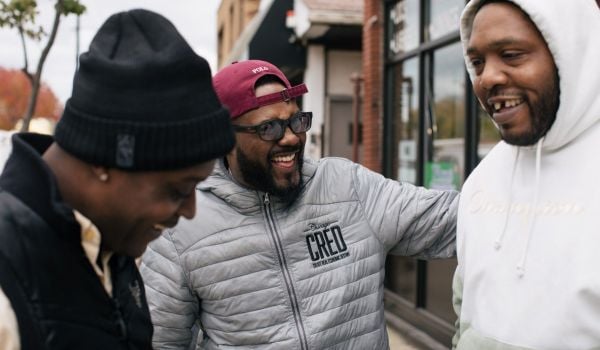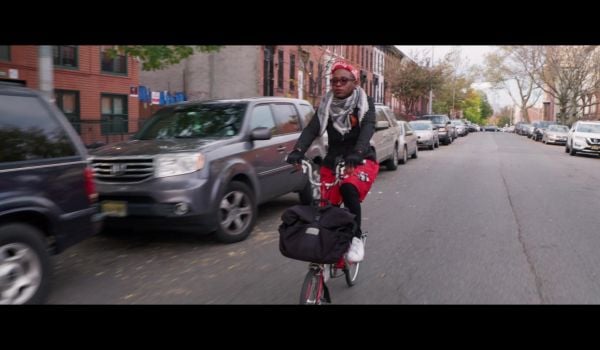Welcome to “The Mobile City,” our weekly roundup of newsworthy transportation developments.
Feature Takes Deep Dive into 30 Years of Community Destruction in the Name of Moving More Cars
In the 1960s, as the Interstate Highway System was being pushed through our large cities — contrary to President Dwight Eisenhower’s original vision for the system — activists and advocates for Black communities decried the construction of “white men’s roads through black men’s homes.”
We may have stopped building new urban freeways for the most part, but state transportation departments continue to widen the ones we already have, to dubious effect. And now, thanks to the Los Angeles Times, we will have some hard numbers on just how badly the widenings continue to tear apart the fabric of neighborhoods of color.
In its feature “Freeways force out residents in communities of color — again”, a team of Times reporters analyzed federal transportation data and found that at least 200,000 households lost their homes to freeway construction over the last 30 years. They then obtained documents pertaining to highway widening and reconstruction projects in the five states whose highway projects have displaced the most families over the last 30 years: California, North Carolina, Texas, Florida and Mississippi. The 22 projects they examined in those states took some 6,200 homes and displaced 16,000 people. More than two-thirds of those displaced got pushed out by projects that disproportionately affected Black and brown communities.
The disproportionate impact stems in large part from the denser development of those communities. For instance, when the team examined a widening project in suburban Houston that turned I-10 into a 26-lane-wide behemoth, it found that only 168 households in the largely white suburban area got displaced.
State transportation officials quoted in the article say they have learned lessons from the earlier era of construction. One of the biggest changes made: Families displaced by the construction now get more generous relocation assistance. In addition, transportation departments also now offer community improvements such as parks, bicycle paths and restored historic structures as a form of compensation. And in North Carolina, transportation planners there built and widened beltways around Raleigh and other cities rather than run new freeways through them or widen existing ones. But residents say that’s not enough to replace lifetimes of memories.
And on top of all this, the Times’ analysis found that the widening projects did nothing to reduce the traffic congestion that the planners used to justify them. After highways were significantly widened in and around Houston and through a choke point in Los Angeles, traffic speeds returned to pre-construction levels.
The pace of these projects has slowed over the last decade, however, and the Biden administration has made undoing the effects of racist highway construction a top priority.
For their part, highway officials continue to defend their construction projects. After telling the story of a Tampa resident who lost his home twice to construction on I-275, the Times article quoted this statement from Florida Department of Transportation spokesperson Alecia Collins:
“The only way to eliminate displacements for the interstate projects in Tampa would be to do nothing and continue to utilize the 1960s interstate system. At the rate that Florida is growing, that simply isn’t a safe and/or viable option.”
…But Data from Louisville Say Otherwise
Joe Cortright of City Observatory in Portland would no doubt take issue with that Florida DOT spokesperson. And, in a sense, he did, by showing a means of addressing traffic congestion that actually worked in Louisville.
Unfortunately for the Commonwealth of Kentucky and the State of Indiana, they first spent a billion dollars in order to test the idea.
The two states were probably not aware they were conducting an experiment when they built a second bridge to carry I-65 across the Ohio River and widen a freeway junction south of the new bridge on the edge of downtown. After the bridge opened, doubling the number of lanes available to carry traffic across the river from six to 12, the two states’ transportation departments levied a toll on both bridges to help pay for the construction of the new one.
The tolls are modest — $2.21 one-way with a transponder, with a 50 percent discount for regular commuters — but the effect they had on traffic across the bridges was dramatic: according to traffic counts collected by the Indiana Department of Transportation, traffic on I-65 across the two spans fell by more than half, from 140,000 vehicles per day to around 60,000, once the tolls were imposed in 2017. (Traffic rose 75 percent on a nearby free bridge, but the increase in number of cars using it was still less than the number that stopped using the I-65 span.)
“The fact that Louisville residents would rather drive miles out of their way or sit in traffic for an extra 10 or 15 minutes to travel on a ‘free’ road, rather than spend a dollar or two for a faster, more direct trip tells you the very low value that highway users attach to these extremely expensive roadways,” Cortright wrote in the essay.
The bottom line, Cortright argued: Pricing roads is the only proven method of reducing traffic and congestion. The drop in traffic happened almost immediately after the bridge opened, and Streetsblog noted the phenomenon in 2018. Cortright’s data shows that drivers are still avoiding the toll road, three years later. ”But the truth is, state DOTs don’t care about congestion, except as a talking point to get money to build giant projects,” he concluded. “The next time you hear someone lamenting traffic congestion, ask them why they aren’t trying the one method that’s been shown to work.”
Bicyclists Seek Second Amendment “Solutions” to Fend Off Aggressive Motorists
As more people take to the roads using bikes as basic transport, the death toll has also risen: since 2015, more than 800 bike riders a year have been killed in bike-car collisions. And, reports Mel magazine, in Texas, drivers have taken to more severe and harmful ways of expressing their displeasure at the sight of bikes on the roads. In return, the magazine notes, some cyclists have begun carrying guns.
As Doogie Roux, an artist, consultant and avid cyclist who began carrying a gun when he moved from Louisiana to Houston in 2012, put it in the article, “When we look at shared spaces in Texas, especially our highways, the sight of a cyclist should just mean, ‘Hey, this is a fellow Texan on the road.’ But instead, things have gotten so polarized, and people have bought into certain attitudes, politics and ideologies about what it means to ride a bike versus a truck.
“The altercations can happen on a daily basis. And so many times in the past, I’ve felt helpless. It just got to a point where it felt like these interactions could crescendo to a point where a firearm is necessary to protect myself.”
Roux, who is Black and has also experienced driver aggression based on his race, says he doesn’t see armed bicyclists as the solution to the problem. And most cycling advocates say that de-escalation and avoidance of known dangerous areas are better strategies. But the latter may not always be practical, and the former difficult given the power imbalance between car and bike.
“In a better world, people in cars would view a cyclist as just another human, finding the most efficient way to move through the world,” reporter Eddie Kim concludes. “Instead, aggro drivers in America keep choosing their right to terrorize — and cyclists in states that allow for the open carry of guns are choosing their right to feel better, one … firearm at a time.”
Know of a development that should be featured in this column? Send a Tweet with links to @MarketStEl using the hashtag #mobilecity.

Next City contributor Sandy Smith is the home and real estate editor at Philadelphia magazine. Over the years, his work has appeared in Hidden City Philadelphia, the Philadelphia Inquirer and other local and regional publications. His interest in cities stretches back to his youth in Kansas City, and his career in journalism and media relations extends back that far as well.
Follow Sandy .(JavaScript must be enabled to view this email address)




_600_350_80_s_c1.jpg)











